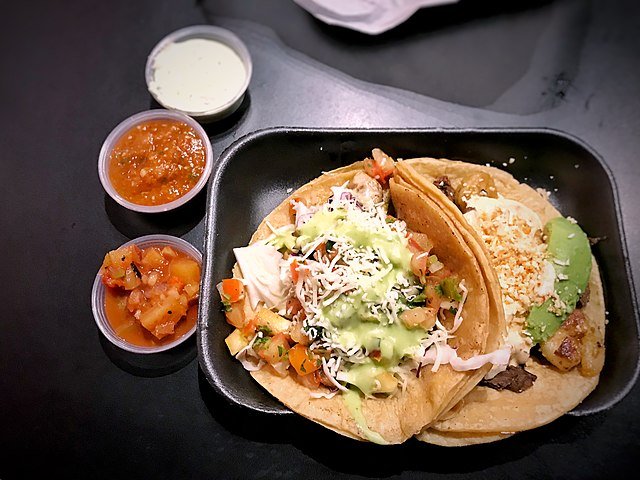From Denny's to LA Taco Trucks: Farley Elliot's Journey With Food
Photo credit: Creative Commons
As one of five lumberjack siblings from New York, Farley Elliot didn’t think he would find himself in Los Angeles writing about taco trucks. Watertown, New York is the home to huge trees, a gas station, a run down diner, a Mini Mart off the freeway and a Denny’s with a bouncer. It’s clear that he didn’t have much to work with in terms of restaurants.
“I’m one of five kids, my family are all lumberjacks essentially, who cut down trees for a living,” said Elliott. Unlike his family (who have a particular knack for cutting trees), Elliott’s passions lie with food.
As a senior editor, food writer and reporter for Eater LA, Elliott finds joy in food, of course, but not as much as he finds joy in eating at a restaurant. “I like food,” he said. “But I love restaurants. I like the energy.”
Elliott doesn’t focus on the likes of Gordon Ramsey or Wolfgang Puck- tycoons of the culinary world- but instead focuses on the amazing chefs behind LA’s delectable street food. From taco trucks to food carts to illegal backyard vendors, Elliott will try it all and he won’t write a critique about it, but rather, a story.
One of the best stories he told was about Art’s Chili Dogs in LA, the so called inventor of the chili dog. What’s more important than the revolutionary idea of putting chili on a hot dog is how the hot dog stand struggled after the 1992 Los Angeles Riots, the start of an actual revolution. Art’s Chili Dogs Stand could be found right in the middle of it all, particularly in the background of the beating of truck driver Reginald Denny in a famous news clip. At that moment, Art’s Chili Dogs became a piece of LA history, Elliott writes: “Art's is a destination unto itself, a flagpole in the greater culinary and cultural history of Los Angeles that has truly withstood so much.”
But of course, the core of the story lies with the food, and Elliot answers the burning question, how are the hot dogs? “They're good, a tame balance between meat and chili and cheese and bun. More than that, they symbolize the human spirit's ability to heal, remember, and rebuild in spite of tragedy. Not bad for a chili dog stand.”
Elliott comes off as humble as they come, even through his instagram bio, which simply states “food writer, not food critic.” If you’re not too immersed in the world of food, you might think of Anton Ego of Disney’s Ratatouille, a tall, thin, terrifying French food critic. If you’re a culinary nerd, you might recognize the names Bill Addison and Patrica Escárcega, two LA Times food critics, or even the late Pulitzer prize winning critic John Gold. Elliot recognizes that these names are part of the mere handful of food critics in the United States, and he’s not one of them- he doesn’t want to be. “I don’t want that job, I don’t think I would ever be good enough at that job. The stuff that gets me up in the morning more than anything is highlighting cool individual places that you haven’t seen before,” said Elliott.
Cathy Chaplin, associate editor at Eater LA, had nothing but good things to say about working with Elliott, “Farley is one of the most hard working and prolific reporters I know. I am always impressed by how many ideas that are in his head at any one time.”
One thing you’ll learn from Elliot is that writing about restaurants isn’t just about how good the food is, how bougie the location is, or the trendiness of the ambiance. It’s about the people, and most importantly, the culture. “I want to do cultural reporting more than culinary reporting,” Elliot said, and that is precisely why he is drawn to street food. In his article about Art’s Chili Dogs, we get a glimpse of LA history, but in his book, “Los Angeles Street Food: a History from Tamaleros to Taco Trucks,” you get the whole story, from the gold rush to now.
Street food has a rich history in almost every city. Growing up in Queens, New York, savory shish kabobs and Jamaican beef patties from food carts were a staple. In LA, the amount of cultures that come together to form the eclectic menu of flavors is remarkable. Elliot breaks down a few of the vast number of cultures who sell street food in LA, “we have huge populations of Cambodians, and Vietnamese, Thai and Armenian- all of this informs the way that we eat. In terms of volume alone, we are on par with some of the greatest street food cities in the world.”
The introduction of Elliott’s book explains that the city of LA is messy, and street food, as well as it’s history, are also messy. “This book is not exhaustive, it’s not complete and it doesn’t tell the whole story because it can’t. Street food doesn’t work like that. It’s too messy. Grab a plate and get your hands dirty.” Part of LA’s street food history is that the vending of the food hasn’t always been permissible. Parking and permit restrictions have worked for years to keep street vendors away from certain LA neighborhoods, or to keep them away for good which could ruin their way of life.
Luckily, things are looking up. Vending laws have been changed, which help keep the food trucks, stands and carts afloat. Elliot will continue to tell the delicious and important stories of LA street food, and he tells us why: “It’s a troubling story, it’s a hopeful story, it’s the kind of story that isn’t going anywhere. Why not tell a story about that? I like talking about Wolfgang Puck, but at the end of the day, street food is what’s going to carry us on.”
